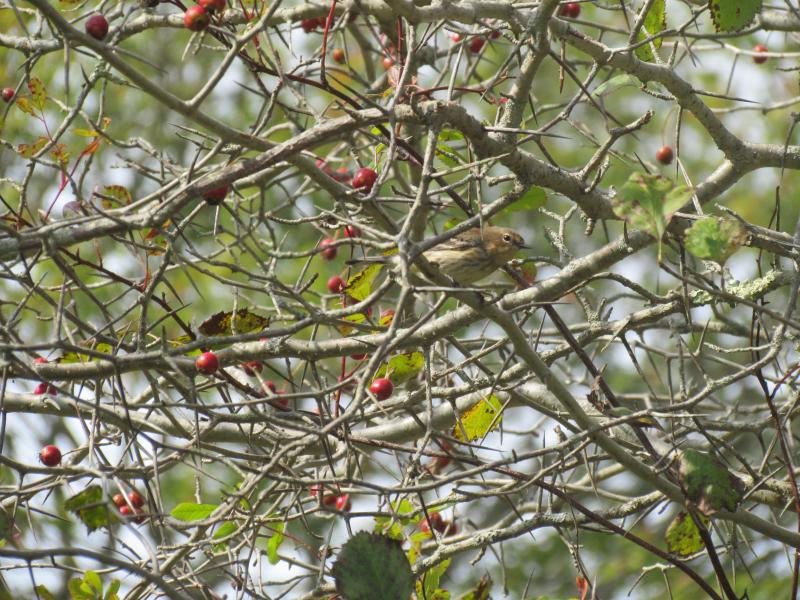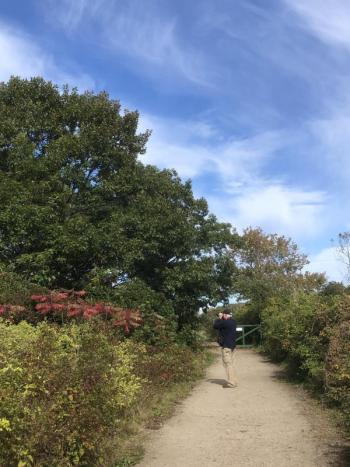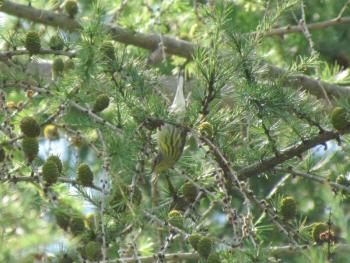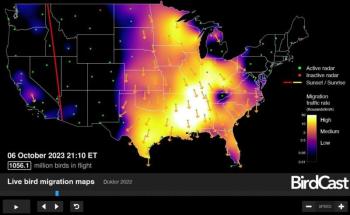A few nights ago, according to BirdCast, more than a billion birds were up in the air migrating south across the U.S. BirdCast (birdcast.info), for those that are not familiar with it, is a project of the Cornell Lab of Ornithology, Colorado State University, and the University of Massachusetts Amherst that employs machine learning and cloud-based computing to develop models that predict the density of nocturnal bird migration using weather radar data.
Most of these birds were flying across the central U.S., not over those of us here in Maine. Direct observations of birders confirmed an amazing number of migrants. Long-time experienced observers in places like Chicago noted early morning flights of warblers and other birds that were the largest that they had ever seen.
Maine may not have experienced that particular massive flight, but bird migration is certainly in full swing here. BirdCast estimates that 173 million birds have passed over the state since the beginning of August. An amazing 22 million are estimated to have flown over Lincoln County during that time.
During the night of Sunday, Oct. 8 alone, an estimated 80,000 birds flew over our state, according to BirdCast.
These stats are pretty incredible, but what does migration like this look like on the ground?
We saw this for ourselves when we birded the beautiful Timber Point Trail in Rachel Carson National Wildlife Refuge in Biddeford this past weekend. Sandwiched between Goose Rocks Beach in Kennebunkport and Fortunes Rock Beach near Biddeford Pool, this portion of the Refuge protects a peninsula and small island just off its tip.
The trail looks over a salt marsh and estuary and leads to the open ocean at the end. It winds through and beside oak woodlands, thick shrubby areas, a freshwater marsh, and small meadows. Near the beginning of the trail, we stopped among the berry-laden bushes and performed the time-honored technique of “spishing” to try to lure in any nearby birds. Almost immediately, we heard the familiar “chuck” of a yellow-rumped warbler as one popped up quickly into view, flashing white corners in the tail and showing off its signature yellow patch on its backside that has given the bird its unofficial name, “butterbutt.”
And then suddenly we were surrounded by yellow-rumps as more and more came in closer to see what all the noise was about. Thirty or forty of the perky birds jumped up, peeked at us, then resumed searching for food, some giving us looks from only a few feet away.
Farther out on the trail, we came across more warblers, this time a mix of species—blackpoll warblers, black-throated green warblers, Cape May warblers, and northern parulas. Thought duller in their fall duds compared to their dazzling breeding plumage, they were every bit as worthy of “warbler neck,” which we eventually found ourselves experiencing. A blue-headed vireo looking handsome with its blue-gray helmet, white spectacles, and yellow sides, showed itself to us. A normally shy Swainson’s thrush surprised us by sitting on an open snag and allowing us to admire its yellowish eye-ring. Golden-crowned kinglets gave their ultra high-pitched calls from the small stand of spruces. Several gray catbirds were still around, giving their mewing, cat-like calls from the thickets.
Fall migration is well underway. Check out BirdCast to get a sense of the magnitude of the migration that goes by unseen each night. And be sure you get out and see these beautiful fascinating birds yourself as they stop off to visit us during the day.
Jeffrey V. Wells, Ph.D., is a Fellow of the Cornell Lab of Ornithology and Vice President of Boreal Conservation for National Audubon. Dr. Wells is one of the nation's leading bird experts and conservation biologists. He is a coauthor of the seminal “Birds of Maine” book and author of the “Birder’s Conservation Handbook.” His grandfather, the late John Chase, was a columnist for the Boothbay Register for many years. Allison Childs Wells, formerly of the Cornell Lab of Ornithology, is a senior director at the Natural Resources Council of Maine, a nonprofit membership organization working statewide to protect the nature of Maine. Both are widely published natural history writers and are the authors of the popular books, “Maine’s Favorite Birds” (Tilbury House) and “Birds of Aruba, Bonaire, and Curaçao: A Site and Field Guide,” (Cornell University Press).
































